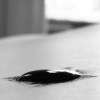Search the Community
Showing results for tags 'bronze age'.
-
I've been looking at this fountain pen for a while, and based on people's positive reviews, I thought I should buy this unique pen. I went for an offer on Ebay that is lower than the retail price. Is this legit? Or did I get a fake?
- 20 replies
-
- visconti
- homo sapiens
-
(and 1 more)
Tagged with:
-

Fine Writing Bronze Age Ef (Expanding Long-Term Review)
TheDutchGuy posted a topic in Fountain Pen Reviews
Context Fine Writing is a Taiwanese company, making mostly high-end pens. Their more affordable pens tend to have striking designs and consist of a series of time-limited models. What's in stores now will not be there forever and what Fine Writing might cook up next is unknown until they release it....- 18 replies
-
- fine writing
- bronze age
-
(and 4 more)
Tagged with:
-
I've found (and bought) the Visconti Homo Sapiens Bronze Age Oversize for 400€ on the german Ebay (the same seller also has the Dark Age for 429€). Link: https://www.ebay.de/itm/VISCONTI-Homo-Sapiens-F%C3%BCllhalter-Bronze-OVERSIZE/ Within Germany, it arrived within 24 hours after ordering it - a...
- 2 replies
-
- visconti
- homo sapiens
-
(and 2 more)
Tagged with:
-
My Homo Sapiens Bronze Age has always been a little problematic - prone to hard starts, skipping, and also ironically gushing and burping into the cap - but now it's developed a new problem that renders it all but unusable: It's got a slow leak at the center band on the body. Ink seeps from the bott...
-
Dear friends, I bought a fountain pen Visconti HomoSapiens bronze age (oversized) on ebay from a seller who declared the pen as new. When I received it, I noticed that the letter "I" of the logo had a defect (according to the photo). Do you think it's possible that the whole logo will peel? Is it co...
-
Hi! I'm probably going to purchase one in the next few weeks but I have never owned a Visconti and I was wondering if anyone here could tell me if I can refill it with standard international European cartridges. Thanks! Kind regards, Dingan
- 12 replies
-
- visconti
- homo sapiens
-
(and 1 more)
Tagged with:





